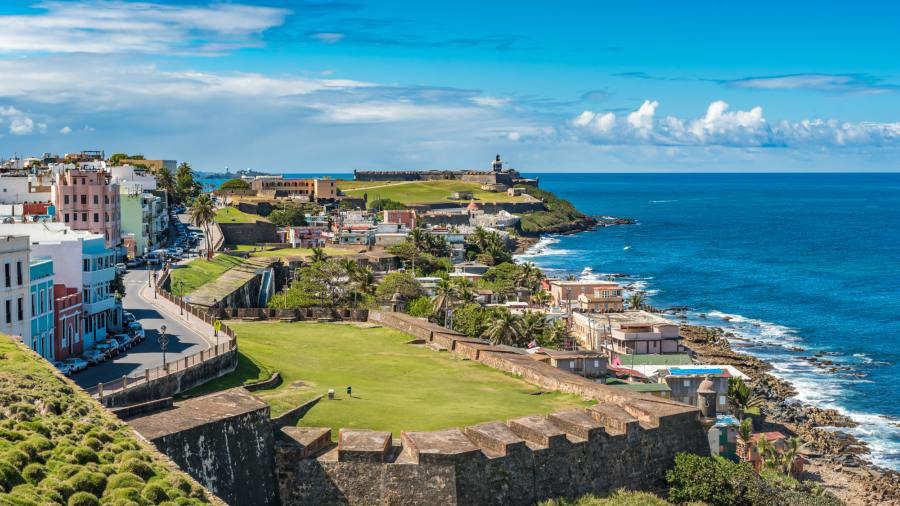
Employees report that they receive $ 7.25 per hour, while in their country they earn less than that per day.
With crops in danger of being lost due to labor shortages, some farmers imported Mexican workers to Puerto Rico, an American island with rampant unemployment, but where receiving the pandemic bonuses is more profitable than working the fields.
At Finca González, in the municipality of Guánica in the southwest of this Caribbean island, a group of Mexicans work in the packaging factory; another washes the bananas and a third ties the tomato plants to the poles.
“This is a lot of fun. For those of us who are used to it, this is perfect,” says Abigain Sebastián, 22, without looking up from the tomatoes she is quickly binding.
SEE: For every gallon of fuel, you pay up to $ 0.84 in taxes alone
“In Mexico, I could do up to seven dollars a day at work.”
In Puerto Rico, on the other hand, Sebastián receives $ 7.25 an hour, the federal minimum wage in the United States.
“This money is a very stable aid,” says the young man. Wear long sleeves and a cap to protect yourself from the tropical sun.
In contrast, for Puerto Ricans, $ 7.25 an hour is not enough, even despite an unemployment rate of 9.2%.
As a result of the pandemic, the unemployed in this unincorporated area of the United States – as in the rest of the country – receive a weekly bonus of $ 300 on top of unemployment benefits.
This is the case with Juan Santiago, who lives near Finca González, although he prefers not to say where he worked. He lost his job in February and with it his salary of $ 290 a week.
Now he instead receives $ 540 a week: 240 for unemployment benefits and 300 as part of the historic bailout signed by President Joe Biden on March 11.
“I’m doing better than when I was working,” Santiago told AFP. “I wouldn’t earn that on the farm. The wages for farm workers are low. The bad is also the sun ”.
Like Puerto Rico, a handful of the country’s 50 states, such as Texas and Pennsylvania, adhere to the federal minimum wage of 7.25. The rest usually imposes a minimum wage of about $ 10, according to the United States Department of Labor.
YOU MAY BE INTERESTED: Costa Rica to Begin Phase One of Gradual Opening of Land Borders Next Monday
Sebastián came to Puerto Rico from Mexico last week as part of an initial group of 21 workers from Chiapas brought with the H-2A temporary farm worker visa program. Seventeen of them went to Finca González.
“With this I also help my old woman who is a single mother. I have a 14-year-old sister, ”says the day laborer.
“Logical so be it”
The economist José J. Villamil indicates that the job market in Puerto Rico is “dysfunctional”.
Part of the problem, he says, is that the Puerto Rican is a regional economy of the United States.
“Since there is a big difference in wages between the island and other states, it is relatively easy for a Puerto Rican worker to go to the United States and take advantage of a higher salary,” he wrote in a column in the local on Monday. newspaper El Nuevo Día.
Another factor in the “dysfunction” is the bonuses of the pandemic, he says.
“Obviously, the appeal of working for $ 7.25 is lost and it goes without saying that this is the case,” the expert writes.
Héctor Cordero, president of the Puerto Rico Farmers Association, told NotiUno 630AM radio last week that 1,000 to 1,500 braceros are needed on the island and that the arrival of a group of Hondurans is being processed.
Carlos González, the owner of the 375-hectare farm that bears his name, accuses his countrymen of “losing their working culture”.
However, it recognizes that federal aid is not solely responsible for workers’ flight.
Puerto Rico has been hit by two Category Four hurricanes and a series of earthquakes in recent years, exacerbating the financial crisis that has dragged the island for over a decade.
And then, “with the pandemic, I won’t even tell you,” adds González.
As a result of this ongoing crisis, the population of 3.1 million is down 14.3% from 2010, according to the US Census.
“Everything was always right together and there came a time when we couldn’t find staff,” says González, who grows vegetables such as bananas, tomatoes, onions and squash.
But “this situation is not topical,” he adds. “It’s a historical thing and it stems from our colonial situation.”